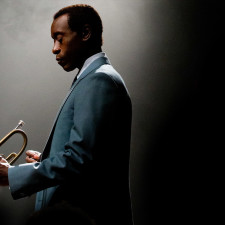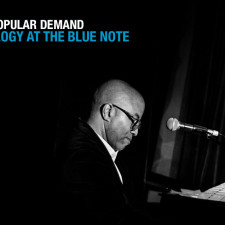James Brown – Good Foot/ S Power/ Make It Funky (ST 1973)
Recognized as the “Godfather of Soul”, renowned artist James Brown was easily one of the most influential figures in 20th century popular music. With his ear-piercing cries and hollers as well as the accompaniment of his flawless, energetic back up bands, Brown created generations of ‘feel-good’ funk and soul music. In Brown’s live performance at Soul Train on February 10, 1973, he blended three of his well-known songs- Get on the Good Foot, Soul Power, and Make it Funky- to create a fusion that paralleled the energy and creativeness seen throughout much of jazz history. Abundant in ring shout tropes, the affect of this tune’s various musical components on the audience is alike to the influence of numerous early jazz artists on their listeners.
The driving rhythm created by the drum set, tambourine, bass, and guitars- though it varies a little during the song -is a call to the audience to ‘Get on the Good Foot’ as much as is Brown’s outright demand in his lyrics. The rhythm section’s constant repetition and preciseness embeds a metronomic pulse in the people’s mind to dance to just as Count Basie’s Orchestra would have done so in 1940. In addition, Brown’s use of call and response with the audience at various moments generates an involvement and interaction between musicians and listeners that enhances the excitement. Brown asks the people, “What do we need?” and they respond, “Soul Power”, he ask the people, “Can I do it?” and they respond, “Do it!”, and finally he asks the people, “Can I make it funky?” and they respond with “Make it funky”. This question and answer technique in Brown’s vocals is used for the same purpose as it has been always been used: audience participation. Repeated riffs in the saxophone section, especially those ending in long, bent notes, almost create a countermelody to Brown’s vocals in the first section of the song while providing support for Brown’s spontaneous cries and interjections as well. These exclamations and shrieks convey the energy and climatic points along the song. Though Brown’s calls might be more frequent and forward than shouts heard in earlier jazz styles, both forms of vocal improvisations are used to express the emotion at that moment of the song.
Although James Brown’s performance of “Get on the Good Foot, Soul Power, and Make it Funky” occurred decades later than early jazz shows, the tropes infused throughout the song express the same ideas as tropes heard in early jazz tunes. The constant repetition in the rhythm section, vocals, and band create that driving dance tempo and beat as heard in swing and other forms of jazz. The brief solos and spontaneous cries almost release the pent up energy that the song produces so that the audience remains relaxed and comfortable. Though one can’t say that Brown’s music ‘really swings’ or ‘has that ragged ragtime rhythm’, its ability to ‘be funky’ allows any audience to enjoy as they would other forms of jazz.
Allyce Estremera
Tags: Funk, James Brown, Jazz, Soul

 Share On Facebook
Share On Facebook Tweet It
Tweet It



![[Video] BBC Documentary on Allen Toussaint](https://musiqology.com/blog/wp-content/uploads/2015/11/allen-toussaint-225x225.jpg)




![[Philly EVENT] Screening of Amazing: A Film about Bud Powell](https://musiqology.com/blog/wp-content/uploads/2015/03/bud-powell-225x225.jpg)



